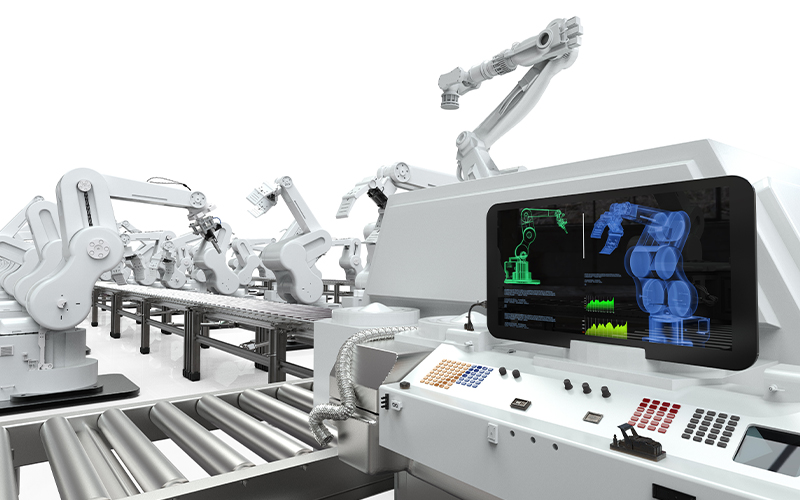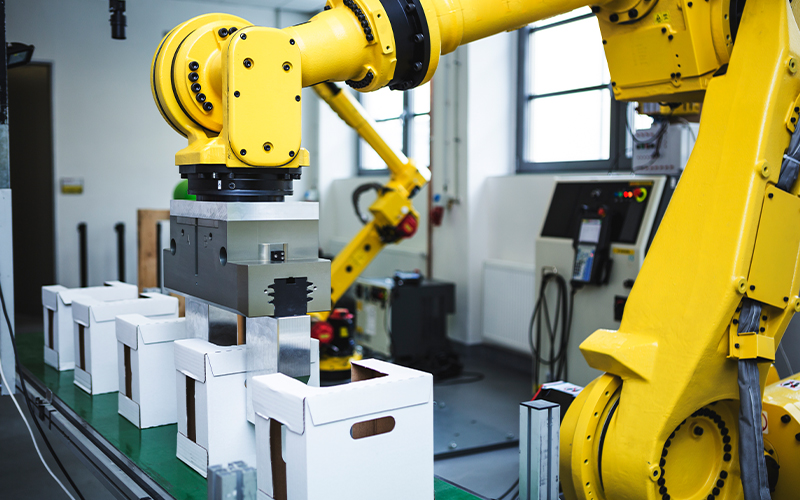BUSINESS TRANSFORMATION
Automation at the heart of digital transformation
Digital transformation has made its presence felt in most sectors over the past few years. However, the pandemic has made it imperative for businesses to adopt a digital-first model. The outcome of this has been an accelerated pace of digital transformation across different sectors. Data reveals that 89%of all companies have already adopted or plan to adopt a digital-first business strategy.
The COVID-19 pandemic has shown us that agility is a critical factor for a sustainable business. Businesses must respond quickly to crises such as supply chain disruptions, talent recruitment and retention, coping with changes, time-to-market pressures, and more. The most effective way of attaining agility is by adopting digital methods of operation.
The need for digital transformation
The primary objective of any business is to make a profit. It does so by offering products/services to its customers. So, it has a whole set of processes to produce and market its products. If we take the example of a product-based organisation, it will have divisions for R&D, manufacturing, testing, marketing, and more. All these divisions will have staff to run different activities associated with the core business functions. It will also require support functions such as human resources, finance, etc. for managing the workforce and processes.
So, we can infer that any organisation is a network of people, processes, and systems that work in tandem to function seamlessly to provide value to the buyer. Digital transformation is the process of mobilising these aspects from an offline to an online mode. This shift is affected by leveraging digital technologies to impact customer experience, operational processes, and business models. Digital transformation is required to help businesses adapt to the changing dynamics of the market and cope with unpredictable customer behaviour.
Digital transformation is not just about leveraging technology, it is also about people. Actual digital transformation is achieved when man and machine collaborate to enhance customer experience.
The key elements for digital transformation in any organisation are:
- Customer Experience
- Operational Agility*
- Organisational Culture
- Leadership
- Enabling the Workforce
- Integration of Digital Technology
Effecting digital transformation through all these factors can be a time-consuming process. This delay can negatively impact the performance of the business in a dynamic marketplace.
One of the most efficacious ways of achieving more in less time is automation. In other words, automating repetitive processes helps save time, money, and resources.
How automation and digital transformation go together
Helps Employees Focus on Critical Aspects of Digital Transformation
Automated processes run efficiently in the background, relieving employees of monotonous tasks. Employees can shift focus to activities associated with those elements of digital transformation that require human intervention. They could focus on elements like customer experience, organisational culture, enabling workforce, and leadership.
Any organisation can make a digital shift only if man and machine work collaboratively. Business automation boosts employee efficiency and helps redefine job roles. According to a recent survey by Zapier, 65% of knowledge workers are less stressed at work because they automate manual tasks. If the workers are less stressed, there is an improvement in their performance thereby enhancing productivity.
Enables Restructuring of the Organisation
Automation can serve as the first step in achieving enterprise-level digital transformation. This is because the entire organisational set-up can be restructured, with automation at its core. Automation can be introduced on factory floors, warehouses, and a host of business and operational processes enabling collaboration alongside humans. It will also ensure that processes run seamlessly even in the absence of humans.
Resolves Multiple Business Problems
Automation bots can simultaneously streamline business processes, address labour shortages, enhance productivity, and maximise output. In addition, cognitive bots mimic humans and are continuously learning and adapting to changes. Hence, they can be essential factors for ensuring agility in the organisation.
Conclusion
Businesses across the globe are realising the significance of digital transformation and are ready to invest in it. According to Statista, global investment in digital transformation will reach 2.8 trillion USD by 2025 from 1.8 trillion USD in 2022. An automation fabric enables seamless implementation of digital transformation. Automation fabric is an advanced framework that facilitates a hybrid workforce of human and digital workers. This fabric weaves together all automated components of a business process to give impetus to digital transformation.
*For organizations on the digital transformation journey, agility is key in responding to a rapidly changing technology and business landscape. Now more than ever, it is crucial to deliver and exceed on organizational expectations with a robust digital mindset backed by innovation. Enabling businesses to sense, learn, respond and evolve like a living organism, will be imperative for business excellence going forward. A comprehensive, yet modular suite of services is doing exactly that. Equipping organizations with intuitive decision making automatically at scale, actionable insights based on real-time solutions, anytime/anywhere experience, and in-depth data visibility across functions leading to hyper-productivity, Live Enterprise is building connected organizations that are innovating collaboratively in future.






